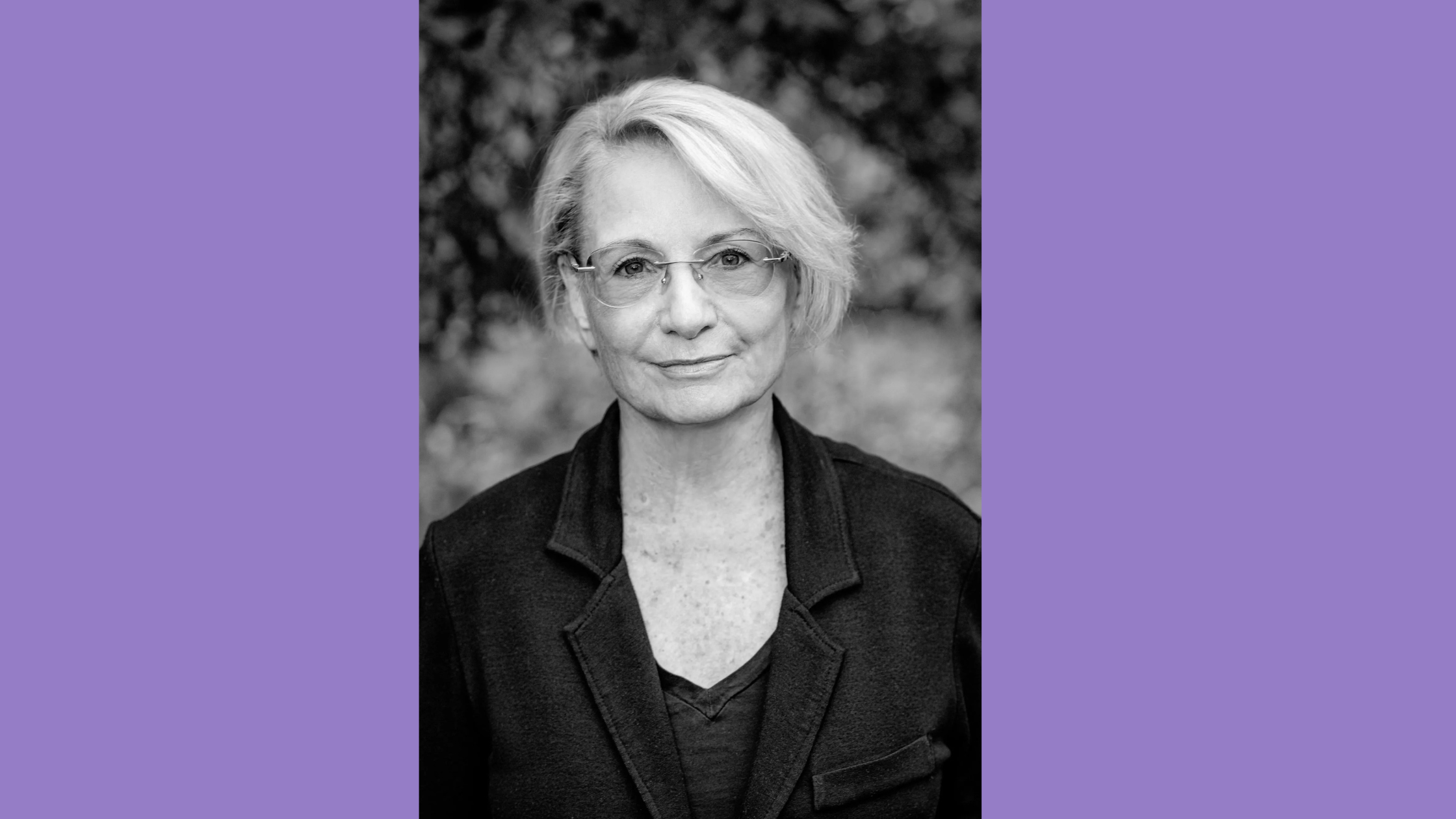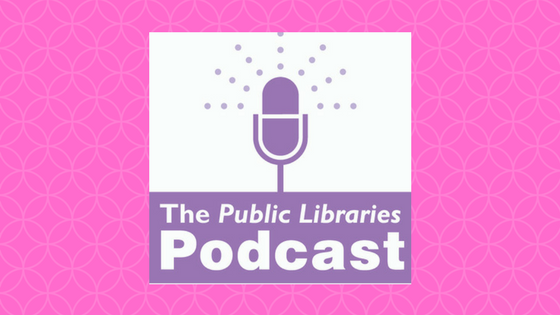Organizational Capacity and the Public Library (Featuring an Interview with Lexington (KY) Public Library Executive Director Ann Hammond)

Over the past two decades, “organizational capacity” has received considerable attention, and in May 2015 a Google search of the term produced about 455,000 results. Methods for assessing organizational capacity are available,1 as are guides to building it.2 At least one framework for building organizational capacity is available,3 as is an answer to the question of why capacity building is needed.4 In addition, one of the world’s leading management consulting firms has produced a lengthy report on organizational capacity and how it is developed in nonprofit organizations.5
Higher education has also discovered organizational capacity. At Wichita State University, the Center for Community Support and Research works “closely with organizations’ management, staff, and boards to identify organizational capacity needs, develop a plan to address those needs and implement capacity building activities, and assess progress on organizational change.”6 Formal study of organizational capacity can be pursued: “Regis University’s graduate certificate in Nonprofit Organizational Capacity Building is designed for nonprofit organization leaders—executives, administrative staff members, board officers, and other members—who are seeking to strengthen the capacity of their organization in terms of fiscal, operational, strategic, and governance performance.”7 A report is available that “provides information about how leading institutions in higher education and vendors are building [organizational] capacity in analytics to improve student success.”8 Organizational capacity is the subject of at least one PhD dissertation.9
What Is Organizational Capacity?
The concept of organizational capacity makes intuitive sense. An organization exists for a purpose, and the organization’s capacity has to do with its ability to fulfill its purpose. Definitions of organizational capacity are straightforward. Eisinger defines organizational capacity “as a set of attributes that help or enable an organization to fulfill its missions.”10 Barman and MacIndoe refer to organizational capacity as “an organization’s ability to implement externally generated expectations from their organizational field.”11 According to Horton et al., “In simple terms, an organization’s capacity is its potential to perform—its ability to successfully apply its skills and resources to accomplish its goals and satisfy its stakeholders’ expectations.”12 For Sharpe, organizational capacity is “the ability of the organization to mobilize financial, human, and structural capital to fulfill its mission.”13
Although the goal of organizational capacity is an outcome—an organization carries out its mission—organizational capacity is itself an outcome; and to produce the outcome—to create organizational capacity—requires that the organization have the necessary resources. Meyer and Davis say “resources associated with effective and efficient performance can be identified.”14 Terms other than “resources” are also used. Eisinger refers to “attributes”15 and Hall et al. refer to “organizational capital.”16
The attributes that Eisinger refers to “constitute the organization’s capacity profile.” However, although it is the “attributes that help or enable an organization to fulfill its missions,” having the attributes, while a necessary condition for fulfilling its mission, is not a sufficient condition for doing so: “These attributes are latent until they are mobilized. Thus, what is interesting about capacity is whether it is exploited or not. Effective organizations tend both to have a broad array of capacity attributes and use or mobilize that capacity to fulfill their organizational missions.”17
Assessing Organizational Capacity
Venture Philanthropy Partners (VPP), founded in 2000, is a philanthropic investment organization that helps great leaders build strong, high-performing nonprofit institutions. It concentrates money, expertise, and personal contacts to improve the lives and boost the opportunities of children and youth of low-income families in the National Capital region. The website explains further: “Our co-founders . . . recruited 26 other technology and business leaders and several foundations to join together and contribute more than $30 million to capitalize VPP’s first investment fund.”18
However, “As VPP began planning its [investment] fund, it seemed clear that we needed to better understand how to make successful investments in organizational capacity.” With the goal of “understanding the characteristics of successful capacity building investments,” VPP “asked McKinsey & Company … to identify examples of successful capacity building experiences at nonprofits across the country.” As a part of its work, “McKinsey developed a capacity assessment tool for nonprofits.”19 The tool—an assessment grid—is an appendix to the McKinsey report and “may be used by nonprofit managers, staff, board members and external capacity builders and funders” for any of several described objectives, among which is “to identify those particular areas of capacity that are strongest and those that need improvement.”20
The McKinsey report identifies the “seven elements of nonprofit capacity”: (1) aspirations, (2) strategies, (3) organizational skills, (4) human resources, (5) systems and infrastructure, (6) organizational structure, and (7) culture. Each element has components, and some components have subcomponents, with the result the assessment grid comprises 58 “areas of capacity” on each of which the person completing the assessment is “trying to score your organization on the continuum of ‘1’ to ‘4’.”21
Organizational Capacity and the Public Library
Although the concept of organizational capacity has been applied most often to nonprofit organizations, it is applicable to organizations of every type, to include for-profit firms, governmental agencies, and public libraries. In spite of its relevance to public libraries, however, a search of Public Libraries from 1998 through the July/August 2014 issue for the terms “organizational capacity,” “capacity building,” and “capacity” produced only one relevant result, published more than a decade ago.22 On the other hand, organizational capacity is among the four broad topics that are discussed in Lexington (KY) Public Library’s (LPL) Annual Report 2013 (the others are marketing, service capacity, and results).23 This prompted a request to LPL’s executive director, Ann Hammond, to be interviewed about organizational capacity and the library, to which she agreed. Information about the library and the community precedes the interview.
Lexington (KY) Public Library
LPL traces its antecedents to the late eighteenth century when, on January 1, 1795, a group of residents established a library at what was then Transylvania Seminary. Although known as Transylvania Library, it was “for both the students at Transylvania Seminary and the citizens in the area.” After several years the library moved from the Seminary to a more convenient location with the town, and it was renamed the Lexington Library. This library was a private corporation, owned and controlled by shareholders. A sum of $500 was raised by selling shares of stock for $5 per share. In 1898, Lexington qualified as a city of the second class and was permitted by state law to establish and operate a tax-supported free public library. It received $60,000 for a building from the library program established by Andrew Carnegie, and the building opened on June 15, 1905. It remained LPL’s main facility until March 26, 1989, when service to the public ended to permit relocation of materials to the new central library, which opened April 6, 1989.24
The library responded to population growth by establishing branches, beginning in the 1970s, and today, according to its website:
The Lexington Public Library serves a merged city-county jurisdiction of 300,000+ people through a central library, 5 neighborhood branches, an active Outreach department, and rapidly expanding virtual services. In addition to traditional library services, we support a digital studio with a full array of video and audio editing equipment for customer use; an art gallery; state of the art theater for live performances, movies, and presentations; a job lab where customers can get personalized help with resumes and job applications; a bilingual homework help program; a Storytime Bus which takes our reading readiness programs to children in day care centers; a library cable TV channel; and a “Book a Librarian” program for customers who need in-depth research assistance, reader’s advisory, or help with their digital devices. Whatever your age or interest, you can expand your horizons and exercise your brain by visiting the “people’s university”—your local public library. Here you will find resources, programs, and experts to help you explore any topic you desire. Lexington Public Library is ready to welcome you!25
About Lexington-Fayette County
In the early 1970s, the voters of Lexington and Fayette County (KY) voted to merge the two, to form the Lexington-Fayette Urban County Government, which came into being January 1, 1974. According to the United States Census Bureau, the April 1, 2010, Fayette County population was 295,803, and the population in mid-2013 was estimated to be 308,428.26 Lexington refers to itself as the Horse Capital of the World. Although Bardstown, approximately 60 miles west southwest of Lexington, refers to itself as the Bourbon Capital of the World, there are numerous bourbon distilleries in central Kentucky, including small distilleries in Lexington. In addition, craft brewing is established and growing in Lexington.
Lexington is home to the University of Kentucky, which is the largest employer in Lexington-Fayette County. Lexmark is headquartered in Lexington. Lexington is a regional medical center, with the University of Kentucky Medical Center and Hospital, Central Baptist Hospital, Saint Joseph Hospital, two Veterans Administration hospitals, and other medical facilities. Lexington is the largest community in and the economic heart of the Bluegrass Region of central Kentucky. It is approximately 25 miles east of Frankfort, the state capital; 75 miles east of Louisville, the state’s largest city; and 80 miles south of Cincinnati. The unemployment rate in Fayette County is consistently among the lowest of the state’s 120 counties. According to the Bureau of Labor Statistics, in June 2014 the Fayette County unemployment rate was 6.3 percent and the Kentucky unemployment rate was 7.4 percent.27 Two interstate highways, the north-south I-75 and the east-west I-64, pass through an outlying portion of Fayette County.
There is no heavy industry in Fayette County. However, a large Toyota manufacturing facility is located in Scott County, immediately north of Fayette County. According to information on the company website:
Toyota’s largest vehicle manufacturing plant in North America, Toyota Motor Manufacturing, Kentucky, Inc. (Toyota Kentucky) produced the first American-made Camry in 1988. Nearly 10 million vehicles have rolled off Toyota’s assembly line in Georgetown, where full-time employment is around 7,000 people and investment tops $5.9 billion. . . . Beginning late 2015, the plant will begin production of the first U.S.-assembled Lexus, adding 50,000 vehicles to its current annual capacity of 500,000.28
Although Lexington felt the effect of the Great Recession of recent years, it was not seriously affected by it. The community benefits from sound political leadership, and careful control of local government expenditures enabled the Urban County Government to avoid substantial layoffs. The University of Kentucky also weathered the Great Recession without the need for substantial layoffs or reductions in pay and benefits.
In his 2013 Annual Report, Property Valuation Administrator (PVA) David O’Neill wrote:
The Fayette County housing market experienced a significant and positive shift during the 2012 calendar year. For the first time since 2005, the number of homes sold in Lexington was higher than during the preceding year and we are seeing the continuation of this trend for 2013 as of the October [2013] writing of this report. As we have explained in previous annual reports, Central Kentucky has not experienced across the board declines in property values as seen in other parts of the country because our economy is dependent in large part on jobs in government, higher education and the healthcare sectors rather than manufacturing.29
In July 2014 the PVA commented that, during the Great Recession of 2007-09 and lengthy period of economic weakness that followed, “Even though we were not doing a lot of reassessing, the annual property tax roll in Fayette County never decreased.”30 Strength of the real estate market and stability of the property tax revenue during the years of national economic weakness have been fortunate for LPL. During the period FY06-FY13, the library’s average (mean) operating revenue from local tax exceeded 90 percent.31
An Interview with Lexington Public Library Executive Director Ann Hammond

Director Ann Hammond shown in the Kentucky Reference Room on Thursday, Dec. 2, 2010 at the Lexington Public Library on Main St. in Lexington, Ky. (That s a bust of Henry Clay at right.) Ann Hammond is settling in as the new director of the Lexington Public Library. Photo by David Perry.
Dennis Carrigan (DC): How were you introduced to the concept of organizational capacity?
Ann Hammond (AH): I was hired as executive director for LPL after the previous director had been dismissed. There were allegations of fiscal mismanagement and unethical behavior, which had resulted in some bad publicity for the library and a general feeling that some housecleaning needed to be done. I immediately launched a strategic-planning process, as a way to gauge the needs of the community and determine how best the library could meet those needs, as well as a way to give voice to the concerns of the community and of the staff. Our consultant, Libby Alexander, and I conducted multiple focus groups, community forums, and surveys with elected officials, community and business leaders, educators, library trustees and advisors, managers, staff, and library customers.
In analyzing the results of our efforts, we saw several distinct patterns: first, while the library was providing some pretty amazing events, classes, and services for the community, people often were not aware of them; second, Lexington is a highly educated, technologically savvy community and there was a feeling that the library was not keeping up with the pace of changes, technologically speaking; third, and most troubling, was a pervasive sense of mistrust among the staff and fear of retribution. They felt there was a lack of communication and support from library administration, as well as inadequate opportunities for training and professional development.
While a true strategic plan should be focused outwardly, we felt a need to first turn inward and do some capacity building within the library organization. We needed to look at our organizational structure—do we have the right people in the right jobs? We needed to look at our organizational development—do people understand what is expected of them and have the training and support with which to be successful? And we needed to look at our organizational culture—do people feel respected and valued as members of a team? All of these are part of assessing the overall organizational capacity of an organization. While I had been introduced to issues of organizational capacity when I worked in the for-profit world BLS (before library school), this was the first time I had put these concepts into action in the library world.
DC: In your message in the LPL Annual Report, 2013, you write: “Our Strategic Plan focuses on three areas: Marketing, Service Capacity, and Organizational Capacity.” Is each of the three independent, or do they complement one another?
AH: They complement one another in that the effectiveness of the first two depended on organizational capacity. The first steps in Marketing and Service Capacity were to define what we wanted to accomplish in each area and then determine if we had the right mix of staff talent, training, and resources to reach our goals. For example, knowing that we wanted to conduct a major community relations and rebranding campaign, we needed to know what that entailed and if it could realistically be done in-house or if an outside agency would be required. To the extent we were below-par in our technology offerings, was it lack of talent on the part of staff, lack of vision and leadership on the part of administration or the board, or lack of money? So, while we were conducting a widespread organizational capacity assessment of the entire library system, the Marketing and IT departments were treated to an especially intense scrutiny of their organizational capacity.
DC: By designating organizational capacity as one of only three areas the strategic plan focuses on, you assign it—organizational capacity—considerable importance. As executive director, you would have had to convince the Board of Trustees of the importance of organizational capacity. Did you have difficulty doing that?
AH: No, I did not. The board members and I were all aware that there were problems that needed to be solved. We wanted to be able to focus on our community and its needs, but before we could do that, we needed to cultivate a stronger and healthier organization. As I mentioned, ours was not a true “strategic plan” since it was largely focused inward, not outward. If I had it to do over again, I would have presented this as a management plan in preparation for the strategic plan. After a year of internal work, we felt ready to turn toward meeting the needs of our community. The way our plan was written however, we had the same set of goals—Marketing, Service Capacity, and Organizational Capacity—for two years. The third year, we segued to more traditional library goals—Reading and Learning, Digital Engagement, and Strategic Partnerships—which still incorporated the concepts of the original goals.
DC: In general, have staff members accepted the concept of organizational capacity and the importance you have assigned it at LPL?
AH: Staff has been very accepting of this concept. We put our money where our mouth was right from the start. Three senior level administrative positions were eliminated and the salary savings used to hire more front line staff for public services and support services. We developed a set of expectations and competencies for each public service position, allocated more money for training and development, allowed staff at all levels to serve on planning committees, and conducted mock interviews to help staff prepare themselves for promotion, either with our organization or another. All of these efforts, plus an emphasis on transparency and open communication have had a very positive effect on our organizational culture and effectiveness.
DC: Organizational capacity requires resources—the right resources in the necessary amounts and deployed in the right way. When you decided to introduce the concept of organizational capacity at LPL, did you first undertake a review—an assessment—of the library’s organizational capacity?
AH: Yes. Our multiple meetings with staff, board members, and community leaders helped us understand what the community needed from us; whether we could deliver what was needed was the next question. In addition to the intense scrutiny of our Marketing and IT departments, I formed three staff committees to give input on the capacity of the organization, as a whole. The committees were made up of staff from all levels and all locations in the system, and headed by non-managers. The committees worked independently, compared their results and prepared a joint report outlining the areas in which our organizational capacity needed to improve. This report formed the basis for the action items we developed, i.e., increase in the training budget, development of an internal communications plan, etc. With the board’s full support of our goals and action items, we were able to allocate budget money appropriately.
DC: What were the major conclusions of the assessment?
AH: There were seven essential organizational elements identified as needing improvement before we could reach our strategic goals and vision. These were (1) Define Service Priorities, (2) Realign Resources, (3) Improve Communication, (4) Culture: Professionalism, Accountability, and Internal Customer Service, (5) Project Management: Process and Mindset, (6) Develop a Marketing Plan, and (7) Develop a Training Plan.
DC: Did the assessment lead to changes in the way resources were deployed?
AH: Yes, definitely! For example, developing a comprehensive project management process meant that we could collect and consider a year’s worth of large ticket project requests at the beginning of a fiscal year, decide how each did or did not support our strategic plan, set priorities, and calendar the projects. Now we always know what we’re doing and why, we know that we have money designated for our projects, we know when each will be done, and we know which staff member is the project manager for a given project. This process has greatly improved our communication and accountability. Defining our service priorities allowed us to see that some long-standing programs and processes no longer met current needs, and so those staff and financial resources could be used in different ways.
DC: How do you see introducing the concept of organizational capacity at LPL affecting library performance?
AH: Our ongoing work in terms of organizational capacity has greatly improved the effectiveness of our operations, as well as improving our organizational culture. We have staff members who are energized, innovative, and eager to contribute ideas. They know what is expected of them, and have management support for improving in their current jobs or preparing for future opportunities. In the past year alone, we have had 18 staff promoted within our organization. That’s 7.5 percent of our total staff head count!
DC: When we first discussed this interview, you said organizational capacity is under-addressed in public libraries. A literature search confirms that. What would you tell other public library directors is the principal reason for incorporating organizational capacity in operating their libraries and what would you tell them is the principal benefit from doing so?
AH: Put very simply, you can’t decide where to go until you know where you are. You need to understand your organization’s strengths and weaknesses in great detail. This sounds like the traditional SWOT analysis (strengths, weaknesses, opportunities, and threats), but in this case internally focused, rather than focused on the community. The principal benefits of such an analysis are that you have an opportunity to fix problems that could trip you up later and that you can use such an analysis as a way to build trust and respect among staff. When staff members know that their director has made it a priority to provide them with the tools and the training needed to do their jobs, communicates openly and frequently with them, sets clear priorities and expectations, and holds people accountable to a set of agreed upon standards, their operational effectiveness and job satisfaction are guaranteed to increase.
DC: Were you able to accomplish the “capacity building” that you refer to with existing staff?
AH: Capacity building with staff must be an ongoing process. It’s not something you check off and then forget about. We’ve made tremendous strides in terms of putting the right people in the right jobs, creating new and expanded training and development opportunities, and in recognizing and celebrating leadership at all levels. We believe in the “pendulum philosophy” and try to balance internal promotions with hiring from the outside, so that we have a steady supply of “new blood” and fresh ideas. But we must be continually aware of how the strategic focus and goals of our organization are reflected in the knowledge, strengths, and abilities of our staff. As goals change, we need to revise our expectations, our training, and our recruitment. Library programs and services have a life cycle and need to be “retired” when they no longer reflect the needs of the community.
Library staffing needs must be considered in the same capacity. In the past few years, we have both eliminated and created positions to reinforce our organizational capacity and to better meet the changing needs of our community.
DC: Having adequate revenue is also a part of organizational capacity. Have you taken capacity-building steps with regard to revenue?
AH: LPL receives 92 percent of its funding through a dedicated portion of the assessed property value in the county, a rate that has been fixed since 1986. That’s good news in that our funding is less vulnerable during times of economic downturn than may be the case for libraries that compete with other city or county departments for their share of tax-supported funds.
But it also means that our funding can only increase incrementally as the overall economic vitality of the county increases. Over the last few years, the needs of our community have changed tremendously and our library services and collections have needed to change in response. Our tax allotment is sufficient to maintain the status quo, but renovation or expansion of library facilities, replacement of our aging telephone system, purchase of new outreach vehicles, development of a mobile app, and even support for the wide variety of educational and cultural classes and programs we offer could not happen without additional funding sources. LPL has both a foundation and a Friends of the Library group dedicated to providing additional support for the library. Our foundation had enjoyed moderate success for several years in conducting an annual literary fundraising event and doing targeted fundraising for specific capital needs. We recognized, however, that we needed to expand our fundraising capacity. We hired a development officer to work with the LPL Foundation. This person has recruited many new foundation board members from among our community’s business leaders, entrepreneurs, and philanthropists.
She has instituted an annual giving campaign, a planned giving program, has increased our grant revenue considerably, and has introduced new fundraising event ideas which have really caught the attention of the community! We are now preparing to enter a capital campaign to support renovations to a building we have purchased to replace one of our smallest, oldest facilities.
Our Friends of the Library organization was formed specifically to support library programs and services through used book sales in a full-time bookstore in our Central Library, through branch sales, online sales, and an annual off-site book sale. While these efforts worked quite well in the past, they are now facing severely decreased revenues due to a combination of lower sales volume and higher operating costs. We are currently working with them to analyze their business model and decide what organizational and/or operational changes are necessary to return them to profitability.
DC: Are you satisfied with the level of organizational capacity you have achieved?
AH: I am satisfied that our efforts thus far have been good ones and have increased the capacity of our organization to serve the needs of our community. As with the question of staff capacity, I believe overall organizational capacity is a process, not a result. No organization, library or otherwise, can afford to say “Now we’ve achieved our organizational capacity, so we don’t have to make any further changes.” It’s a never-ending journey. It’s simultaneously challenging, aggravating, rewarding, and frightening. It’s what makes a library director’s job worth doing!
References and Notes
- McKinsey & Company, “Capacity Assessment Grid,” accessed May 8, 2015.
- Carol J. De Vita and Cory Fleming, Building Capacity in Nonprofit Organizations (Wash., DC: The Urban Institute, 2001), accessed July 2, 2014, www.urban.org/UploadedPDF/building_capacity.pdf; McKinsey & Company, Effective Capacity Building in Nonprofit Organizations (Reston, VA: Venture Philanthropy Partners, 2001), accessed May 8, 2015, www.vppartners.org/learning/reports/effective-capacity-building-nonprofit-organizations.
- Jeanette Nu’Man et. al, “A Framework for Building Organizational Capacity Integrating Planning, Monitoring, and
Evaluation,” Journal of Public Health Management Practice 13, supplement (Jan. 2007): S24–S32. - Lilya D. Wagner, “Why Capacity Building Matters and Why Nonprofits Ignore It,” New Directions for Philanthropic Fundraising 40 (Summer 2003): 103-11.
- McKinsey & Company, Effective Capacity Building in Nonprofit Organizations.
- Wichita State University, Center for Community Support and Research, “Organizational Capacity Building,” accessed May 8, 2015, http://webs.wichita.edu/?u=CCSR&p=/organizationaldevelopment.
- Regis University, College for Professional Studies, “Nonprofit Organizational Capacity Building Graduate Certificate,”
accessed May 8, 2015, www.regis.edu/CPS/Academics/Degrees-and-Programs/Certificates/GC-Nonprofit-Organizational-Capacity-Building.aspx. - Donald M. Norris and Linda L. Baer, Building Organizational Capacity for Analytics, EDUCAUSE, accessed July 8, 2014, https://net.educause.edu/ir/library/pdf/PUB9012.pdf.
- Tara Kolar Bryan, “Exploring the Dimensions of Organizational Capacity for Local Social Service Delivery Organizations
Using a Multi-Media Approach,” PhD dissertation, Dec. 2011, accessed May 11, 2015, http://scholar.lib.vt.edu/theses/available/etd-12182011-102130/unrestricted/Bryan_TK_D_2011.pdf. - Peter Eisinger, “Organizational Capacity and Organizational Effectiveness Among Street-Level Food Assistance Programs,” Nonprofit and Voluntary Sector Quarterly 32, no. 1 (Mar. 2002): 117. “‘Missions’ is used in the plural to suggest that nonprofits may have multiple organizational objectives.” Eisinger, 129, n. 3.
- Emily Barman and Heather MacIndoe, “Institutional Pressures and Organizational Capacity: The Case of Outcome Measurement,” Sociological Forum 27, no. 1 (Mar. 2012): 74.
- Douglas Horton, et al., Evaluating Capacity Development: Experiences from Research and Development Organizations
Around the World (The Hague: International Service for National Agricultural Research, 2003), accessed
June 3, 2015, http://unpan1.un.org/intradoc/groups/public/documents/APCITY/UNPAN017418.pdf. - Erin K. Sharpe, “Resources at the Grassroots of Recreation: Organizational Capacity and Quality of Experience in a
Community Sport Organization,” Leisure Sciences 28, no. 4 (July-Sep. 2006): 385. - Anne-Marie Meyer and Meredith Davis, “Defining Organizational Capacity for Public Health Services and Systems Research,” Journal of Public Health Management 18, no. 6 (2012): 536.
- Eisinger, “Organizational Capacity and Organizational Effectiveness Among Street-Level Food Assistance
Programs,” 117. - Michael Hall, et al., The Capacity to Serve: A Qualitative Study of the Challenges Facing Canada’s Nonprofit and Voluntary Organizations (Toronto: Canadian Centre for Philanthropy, 2003), accessed May 11, 2015, http://sectorsource.ca/sites/default/files/resources/files/capacity_to_serve_english.pdf.
- Eisinger, “Organizational Capacity and Organizational Effectiveness Among Street-Level Food Assistance Programs,” 117.
- Venture Philanthropy Partners, “About Us,” accessed May 11, 2015, www.vppartners.org/about-us.
- McKinsey & Company, Effective Capacity Building in Nonprofit Organizations, 6.
- Ibid., 77.
- Ibid., 79.
- Carolyn Noah and Alan Brickman, “Capacity Building for Libraries,” Public Libraries 43, no. 2 (Mar./Apr. 2004): 102–07.
- Lexington Public Library, Annual Report 2013, accessed May 11, 2015, www.lexpublib.org/sites/default/files/file_uploads/annual_report_fy_2013.pdf.
- Lexington Public Library, “A History of the Lexington Public Library,” updated June 11, 2014.
- Lexington Public Library, “About the Library,” accessed May 11, 2015, www.lexpublib.org/about.
- United States Census Bureau, “State & County QuickFacts,” accessed May 11, 2015, http://quickfacts.census.gov/qfd/index.html.
- Bureau of Labor Statistics, United States Department of Labor, accessed May 11, 2015, www.bls.gov.
- Toyota Motor Manufacturing Kentucky, “About TMMK, accessed May 11, 2015, www.toyotageorgetown.com/boutdex.asp.
- David O’Neill, 2013 Annual Report, accessed Aug. 4, 2014, www.google.com/url?sa=t&rct=j&q=&esrc=s&source=web&cd=1&cad=rja&uact=8&ved=0CB8QFjAA&url=http%3A%2F%2Fwww.fayette-pva.com%2Fdownload_file%2Fview%
2F854%2F156%2F&ei=XwZtVYGhFIeNsAW5koHQDw&usg=AFQjCNEU5wVSP47jjwwZ3qmpNRqI2WBtrQ&sig2=Y_bdujHZlFx66OhjaPrl7g&bvm=bv.94455598,d.b2w. - David O’Neill, “Property Tax Roll in Fayette County Surpasses $23 Billion for First Time,” Chevy Chaser Magazine,
posted July 30, 2014, accessed May 11, 2015, http://chevychaser.com/2014/07/property-tax-roll-in-fayette-county-surpasses-23-billion-for-first-time. - Information taken from the annual “Statistical Report of Kentucky Public Libraries” for the fiscal years 2006-13, Kentucky Department of Libraries and Archives, accessed May 11, 2015, http://kdla.ky.gov/librarians/plssd/Pages/LibraryStatistics.aspx.
Resource
Want to Learn More About Organizational Capacity?
The best single source is the Foundation Center,
where resources are arranged by category:
general guidebooks, surveys and reports, case
studies, articles, and websites; http://foundation
center.org/getstarted/topical/capacity.html.







